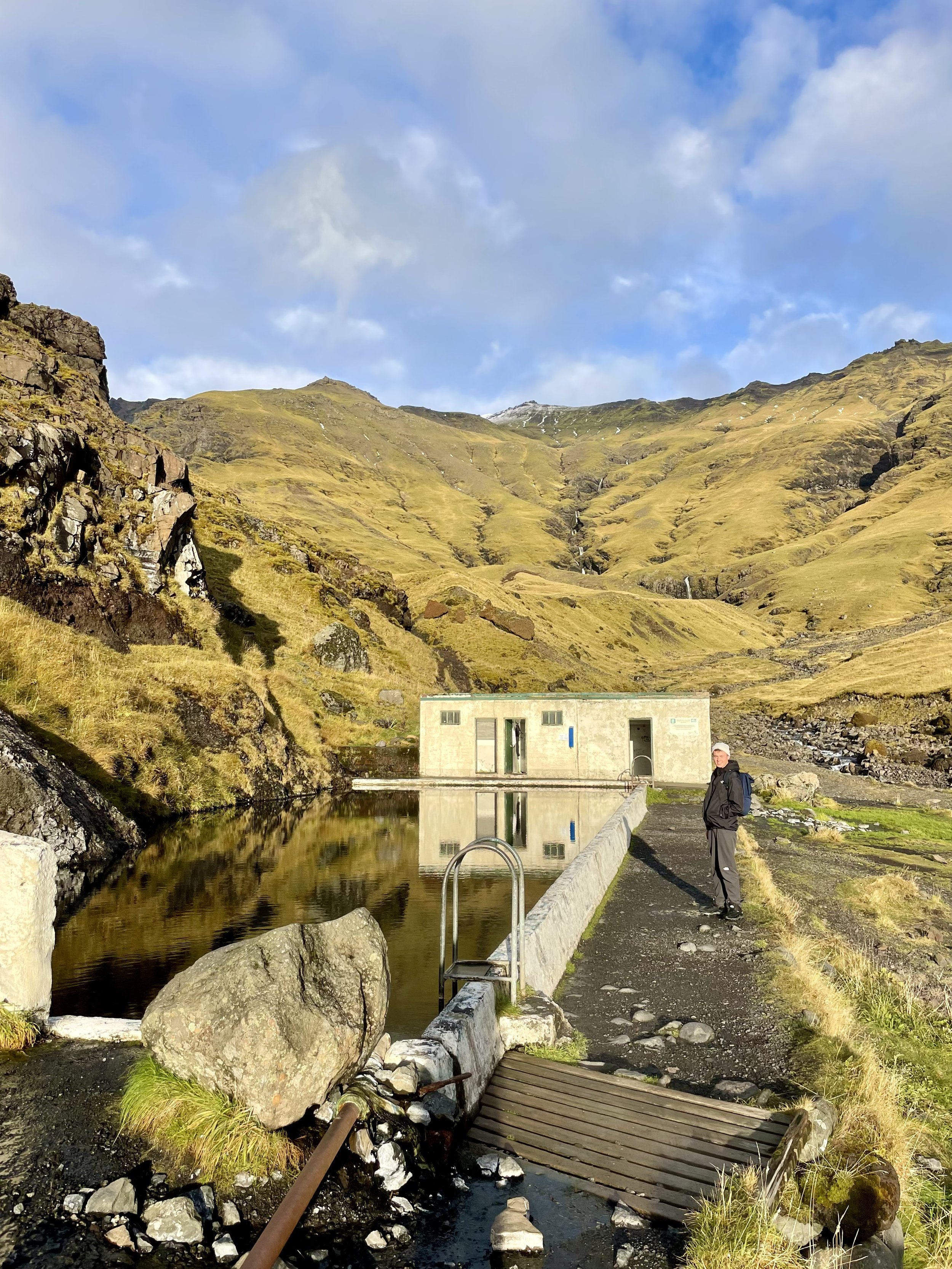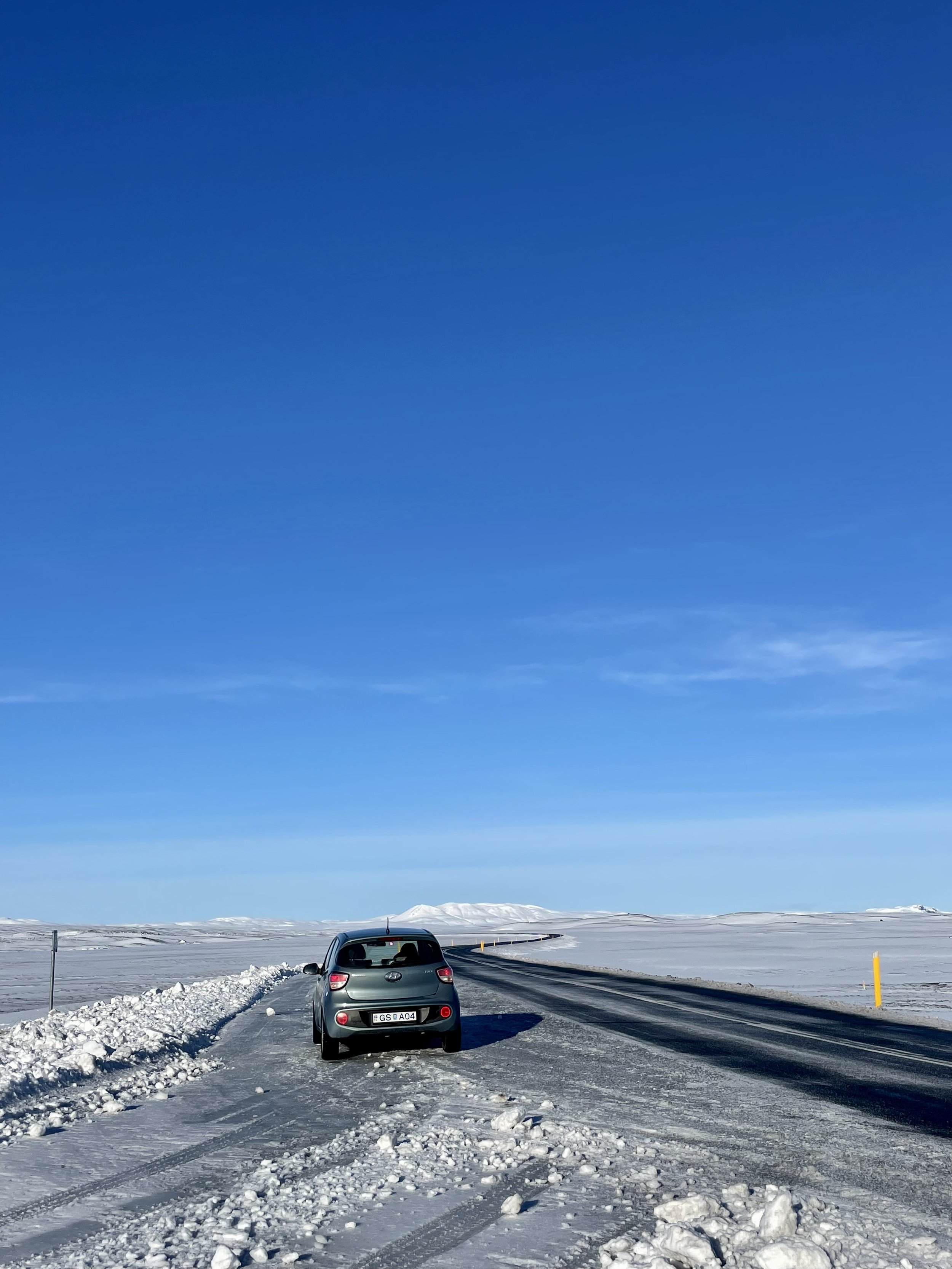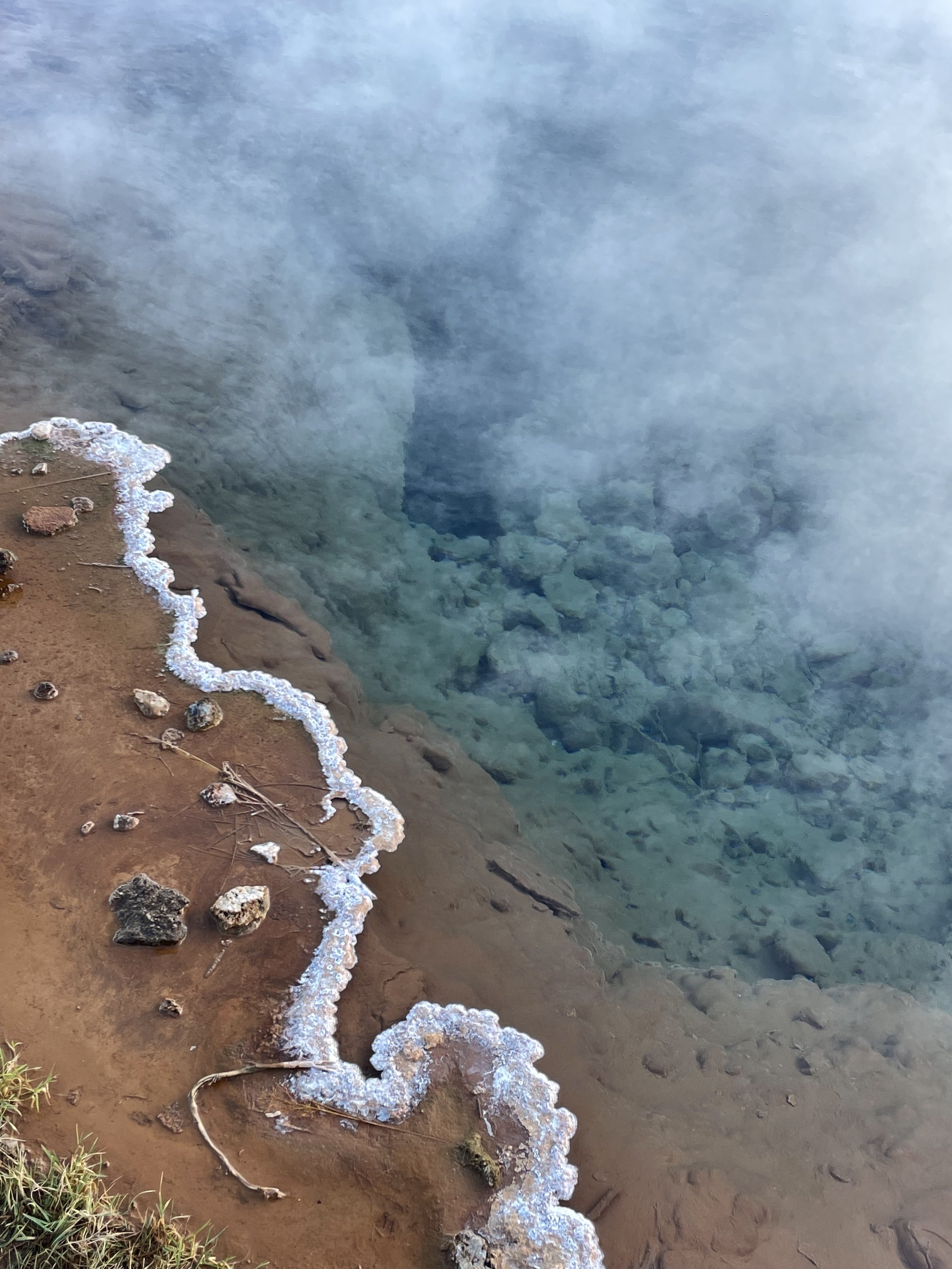
Iceland
Discover
Where the roads are quiet and the views will keep surprising you
Iceland
Drive through landscapes that feel like another planet. Filled with waterfalls, canyons, hot springs and volcanoes. Nature definitely is the real highlight here.
Language: Icelandic
Currency: Icelandic króna
Capital: Reykjavik
-
Iceland is like stepping into another world. Nature is still wild, powerful, and beautifully untouched. It’s a land shaped by fire and ice, with volcanoes, glaciers, waterfalls, and geysers all packed into one small island. The landscapes are dramatic and ever-changing, and the silence in some places is so pure and calming.
What makes Iceland truly special is how everything feels connected to nature. Life moves at a slower pace, and there’s a deep respect for the land. With a population of just under 400,000, it never feels crowded, and there’s space to breathe.
The country is powered almost entirely by renewable energy, making it one of the most sustainable places in the world. From the black sand beaches in the south to the sweeping views of moss-covered lava fields, every corner has something unique to offer. It’s the kind of place where you can drive for hours without seeing another soul and then suddenly find yourself standing in front of a waterfall that takes your breath away.
Whether you’re drawn by the Northern Lights, the peaceful nature or just the sense of stillness, Iceland has a quiet kind of magic that stays with you. It’s not just a destination, it’s an experience.
-
If there’s one place that’s made for a road trip, it’s Iceland. The freedom of having your own car here makes all the difference. You can stop wherever you like, take in the views and really travel at your own pace. It’s the best way to explore the country’s ever-changing landscapes, from waterfalls and lava fields to black sand beaches and tiny roadside cafés.
If you want to see the whole island, renting a car is definitely the way to go. We booked through Sunny Cars and had a great experience. Most of the main roads, especially the Ring Road (Route 1), are well-paved and easy to drive.
That said, if you're planning to explore more remote areas or heading off the main route, it's worth considering a 4x4. The same goes for winter travel, when snow and icy conditions can make the roads a bit more challenging.
Public transport in Iceland is limited, especially outside the capital area. There are a few bus routes between towns, but they’re not ideal if you want to see a lot or get off the beaten path. Renting a car gives you the freedom to explore on your own terms, and in Iceland, that’s the best way to travel.
-
So, how long should you spend in Iceland? That really depends on what you want to see and how much ground you’d like to cover.
If you’re planning to drive the full Ring Road and explore the whole island, I’d recommend giving yourself at least two weeks. That gives you enough time to take it slow, make spontaneous stops, and really enjoy everything along the way, without rushing from one place to the next.
If you’re short on time, a week can still get you a great taste of the country. You could focus on the south coast, for example, or base yourself near Reykjavík and do some amazing day trips.
But if you have the chance to take things slow, go for those two weeks. Iceland is one of those places where the journey itself is just as incredible as the destination.
-
Summer (June to August) is the most popular time to visit Iceland. With mild weather, long days (20+ hours of daylight) and most roads open, it’s perfect for road trips and exploring the country. Just keep in mind that it’s high season, so it can be a bit busier and more expensive.
Late spring (May) and early autumn (September) are great alternatives. You’ll still get plenty of daylight and good weather, but without the crowds. It’s a more peaceful time to explore and enjoy Iceland’s beauty.
Winter (October to March) is for the adventurous! Snow-covered landscapes and the chance to see the Northern Lights make it magical. However, roads can be tricky, especially in remote areas, so a 4x4 is recommended.
-
Icelandic food is all about fresh, local ingredients. Fish and lamb are the main stars, both fresh and full of flavor, sourced from the island’s surrounding waters and wild lands.
And of course, you can't visit without trying the famous Icelandic hotdog. It's a local favorite, served with crispy onions and a tasty traditional sauce.
Travel route
The perfect 2 weeks
Roadtrip itinerary
Iceland is the perfect destination for a road trip. The country’s single ring road, Route 1, circles around the entire island, making it easy to explore without worrying about getting lost. Along the way, you’ll drive through stunning landscapes, with quiet roads and incredible views. You’ll pass lava fields, lush greenery and glaciers, the scenery is always changing. With so much beauty packed into one road, Iceland invites you to slow down, enjoy the journey and let nature take the lead. The map above shows where to stay during your trip but keep reading to discover the perfect 2 weeks itinerary with each day described in detail to help you plan your perfect adventure.
Day 1
Explore the Kerið crater, a volcanic crater with a striking blue lake and walk (or even dive) between the North American and European tectonic plates at Þingvellir National Park. This UNESCO World Heritage site offers a unique chance to stand between two continents, with fascinating geological features and clear waters.
Stay the night in: Hveragerði
Accommodation favorites: INNI - Boutique apartments and The Greenhouse Hotel
Day 2
A day filled with waterfalls! Start at Urriðafoss, one of Iceland’s widest waterfalls, then head to Háifoss, one of the tallest in the country, with a steep but rewarding hike down to the foot of the falls. Later, make your way to Seljalandsfoss, where you can walk behind the waterfall and feel the power of the water up close. If you have time, don’t miss the nearby Gljúfrabúi, a hidden spot tucked inside a narrow canyon just a short walk away.
Stay the night in: Vík í Mýrdal
Accommodation favorites: Farmhouse lodge
Day 3
Start your day at the Dyrhólaey viewpoint, where you’ll get wide views over the black sand beaches and sea stacks. Stop at Halsanefshellir cave to see the unique basalt columns at Reynisfjara beach. Then head to Sólheimasandur for a walk across the black sand to the famous abandoned plane wreck. Not far from there, you can see the Sólheimajökull glacier up close. And if you're up for a short hike, don’t miss Seljavallalaug, a naturally heated pool tucked away in the mountains, a really unique experience. End the day at Skógafoss, where you can climb the stairs next to the waterfall for a beautiful view from above.
Stay the night in: Vík í Mýrdal
Day 4
Walk along the edge of Fjaðrárgljúfur canyon, a deep, green canyon carved by glacial water over thousands of years. Then head to Skaftafell National Park, where you can choose from several hikes, including trails to a glacier and the striking Svartifoss waterfall, surrounded by dark basalt columns. It's an easy place to spend a few hours outdoors.
Stay the night in: Höfn
Day 5
A sight like no other: the glacier lagoon Jökulsárlón and the nearby Diamond Beach, where chunks of ice wash up on the black sand like scattered diamonds. Take your time to wander around and, if you're up for it, join a boat tour or explore an ice cave to get up close to the massive icebergs drifting through the lagoon.
Stay the night in: Höfn
Food tip: At the glacier lagoon, you’ll find the Heimahumar 'Local Langoustine' truck, run by a local couple. It’s a favorite stop for its signature lobster soup and delicious lobster rolls, the perfect treat after exploring the stunning scenery
Day 6
Explore the almost moon-like dunes and incredible views at Stokksnes, then stop by an ancient Viking village nearby. It’s a great chance to connect with Iceland’s history while taking in the stunning surroundings.
Stay the night in: Höfn
Restaurant tip: Otto Matur & Drykkur
Day 7
Travel to Hafnarhólmi, a charming spot known for its stunning coastal views. If you’re visiting in the summer - from late April to mid-August - you’re lucky. This is one of the best places in Iceland to spot hundreds of puffins as they nest along the cliffs. It’s an amazing opportunity to get up close to these unique birds in their natural habitat.
Stay the night in: Borgarfjarðarhöfn
Accommodation favorite: Blabjorg resort
Day 8
Drive towards your next stop: Mývatn. Along the way, you’ll pass the steaming geothermal area of Hverir, with bubbling mud pools and colorful sulfur vents (a very cool sight, but the smells on the other hand…). The drive itself is beautiful, with ever-changing landscapes. Once in Mývatn, explore the Dimmuborgir lava fields, climb to the top of the Hverfjall crater for panoramic views, and end the day by watching the sunset over the lake.
Stay the night in: Mývatn
Accommodation favorite: Dimmuborgir Guesthouse
Day 9
Time to spot some whales! Head out on a whale-watching tour from Húsavík, the whale capital of Iceland. From April to October you could see humpbacks, minkes or even blue whales. During the tour you’ll learn a lot about these unique species. Make sure to layer up, the wind and spray on the open sea can get pretty cold, but spotting a whale will definitely make it all worth it.
Stay the night in: Mývatn
Tour tip: North Sailing - Húsavík Whale Watching
Day 10
A day on the road. Drive towards the Snafellnes peninsula. But don’t worry about driving for the day, you’ll pass many breathtaking views on your way.
Stay the night in: Stykkishólmur
Day 11
Spend the day exploring the Snæfellsnes Peninsula. Drive past Kirkjufell’s mountain, stroll the black sands of Djúpalónssandur, and look up at Snæfellsjökull’s glacier on the horizon.
Stay the night in: Stykkishólmur
Day 12
Discover Iceland’s capital. Reykjavik might be small, but it’s full of character. Colorful houses, cozy café and a laid-back vibe fill its streets.
Wander down Laugavegur for shops, street art and great cafés. Don’t miss the view from Hallgrímskirkja. Explore Icelandic culture at Harpa or the Settlement Exhibition, then grab a bite at one of Reykjavik’s many food halls or grab an iconic hot dog.
Stay the night in: Reykjavik
Restaurant tip: Skál!
Day 13
Visit Geysir, home to the original geyser. While the big one is less active, Strokkur erupts every few minutes, blasting hot water high into the air. Just a short drive away, you’ll find Gullfoss, a powerful waterfall with two dramatic drops. On sunny days, the mist creates rainbows, making the whole experience even more magical.
Stay the night in: Reykjavik
Day 14
On your last day, make a stop at Fagradalsfjall to see the recently erupted volcano and its dramatic lava fields. If you’re in the mood for some relaxation, you can make an optional stop at the Blue Lagoon, a famous geothermal spa, before wrapping up your Iceland adventure.
Iceland
Travel tips
Bring Snacks and Tupperware: You never know when you’ll be out hiking with no food stops nearby. Pack some snacks or even a meal you can bring along in Tupperware. (Be prepared groceries can get pretty expensive in Iceland)
Dress in Layers: The weather in Iceland can be unpredictable and change very fast. Layers are your best friend so you can adjust to whatever the day throws at you.
Book in advance: Especially during peak season, it’s smart to book your accommodations and excursions in advance to avoid any last-minute stress or full bookings.
Bring good hiking shoes: Iceland’s hikes can get pretty muddy, uneven and slippery, so a good pair of hiking shoes will keep you comfy and ready for whatever the trails throw at you.
Track the Northern Lights: If you're hoping to catch the Northern Lights, download an app like Aurora to track the best times and places to see them. It’ll help you make the most of your chance to see this magical spectacle.
Keep Your Phone Charged: You’ll want your phone ready for navigation and photos, so don’t forget to bring a portable charger or car charging cable.
Respect Nature: Iceland’s nature is stunning, but fragile. Stick to marked paths, follow local guidelines and always clean up after yourself to help keep it as stunning as it is for future travelers.
Watch Your Speed: Speed limits in Iceland are strictly enforced, and fines for speeding can be quite high. Always keep an eye on the signs and stay within the limits to avoid any unexpected costs.






















